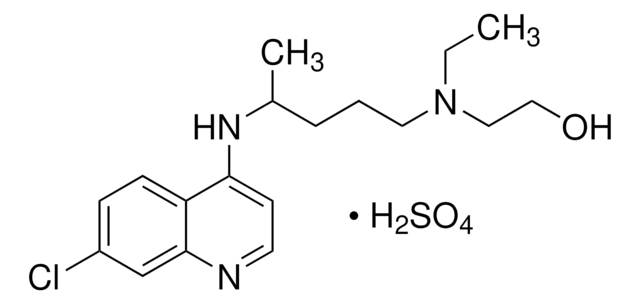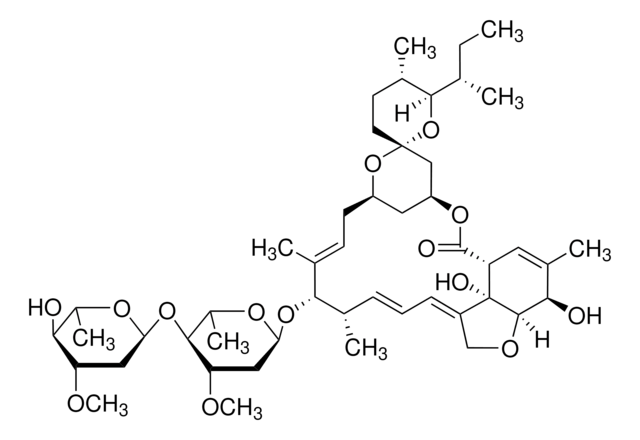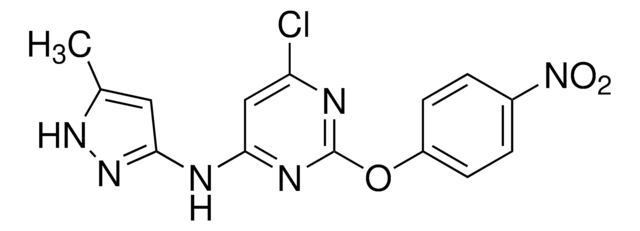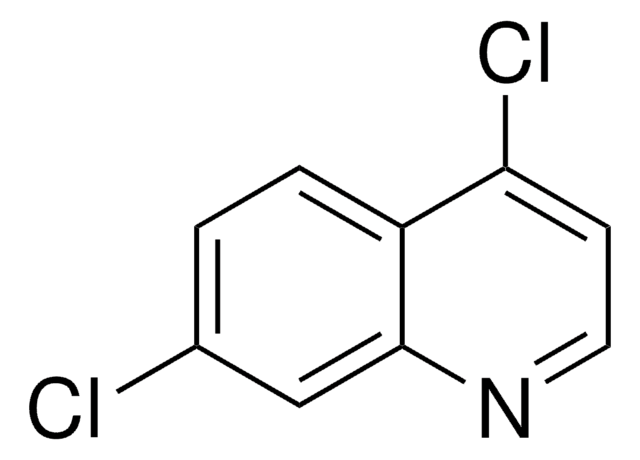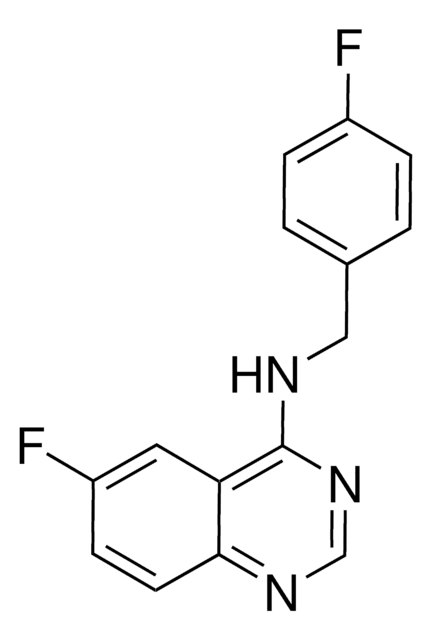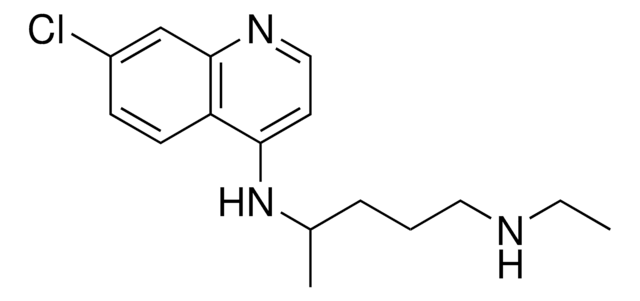1327000
USP
Hydroxychloroquin -sulfat
United States Pharmacopeia (USP) Reference Standard
Synonym(e):
Hydroxychloroquinsulfat -sulfat, 7-Chlor-4-[4-(N-ethyl-N-b-hydroxyethylamino)-1-methylbutylamino]chinolinsulfat
About This Item
Empfohlene Produkte
Biologische Quelle
synthetic
Qualität
pharmaceutical primary standard
Agentur
USP
API-Familie
hydroxychloroquine
Verpackung
pkg of 200 mg
Hersteller/Markenname
USP
Lagerbedingungen
protect from light
Farbe
white to off-white
pH-Wert
3.5-5.5 (1% in aqueous solution, pH <6.0)
mp (Schmelzpunkt)
388.4 °F (198°C; 240°C)
Löslichkeit
chloroform: practically insoluble
ethanol: practically insoluble
ether: practically insoluble
water: soluble
Anwendung(en)
pharmaceutical (small molecule)
Format
neat
SMILES String
OS(O)(=O)=O.CCN(CCO)CCCC(C)Nc1ccnc2cc(Cl)ccc12
InChI
1S/C18H26ClN3O.H2O4S/c1-3-22(11-12-23)10-4-5-14(2)21-17-8-9-20-18-13-15(19)6-7-16(17)18;1-5(2,3)4/h6-9,13-14,23H,3-5,10-12H2,1-2H3,(H,20,21);(H2,1,2,3,4)
InChIKey
JCBIVZZPXRZKTI-UHFFFAOYSA-N
Angaben zum Gen
human ... TLR7(51284) , TLR9(54106)
Suchen Sie nach ähnlichen Produkten? Aufrufen Leitfaden zum Produktvergleich
Allgemeine Beschreibung
Hydroxychloroquine Sulfate is a salt of hydroxychloroquine (HCQ, Plaquenil), a 4-aminoquinoline based antiviral drug.
Anwendung
Also used to prepare standard and system suitability solutions for assay, impurity analysis, and performance test, according to the given below monographs of United States Pharmacopeia (USP):
- Hydroxychloroquine Sulfate Tablets
- Hydroxychloroquine Sulfate
- Chloroquine Phosphate
Biochem./physiol. Wirkung
Hinweis zur Analyse
Sonstige Hinweise
Ähnliches Produkt
Signalwort
Warning
H-Sätze
Gefahreneinstufungen
Acute Tox. 4 Oral - Eye Irrit. 2 - Skin Irrit. 2
Lagerklassenschlüssel
11 - Combustible Solids
WGK
WGK 3
Flammpunkt (°F)
Not applicable
Flammpunkt (°C)
Not applicable
Analysenzertifikate (COA)
Suchen Sie nach Analysenzertifikate (COA), indem Sie die Lot-/Chargennummer des Produkts eingeben. Lot- und Chargennummern sind auf dem Produktetikett hinter den Wörtern ‘Lot’ oder ‘Batch’ (Lot oder Charge) zu finden.
Besitzen Sie dieses Produkt bereits?
In der Dokumentenbibliothek finden Sie die Dokumentation zu den Produkten, die Sie kürzlich erworben haben.
Kunden haben sich ebenfalls angesehen
Protokolle
Under applied conditions, system suitability criteria are met, and the Chloroquine Phosphate HPLC Assay and Impurity Profiling Methods demonstrate good resolution/selectivity, reproducibility, and sensitivity.
Unser Team von Wissenschaftlern verfügt über Erfahrung in allen Forschungsbereichen einschließlich Life Science, Materialwissenschaften, chemischer Synthese, Chromatographie, Analytik und vielen mehr..
Setzen Sie sich mit dem technischen Dienst in Verbindung.